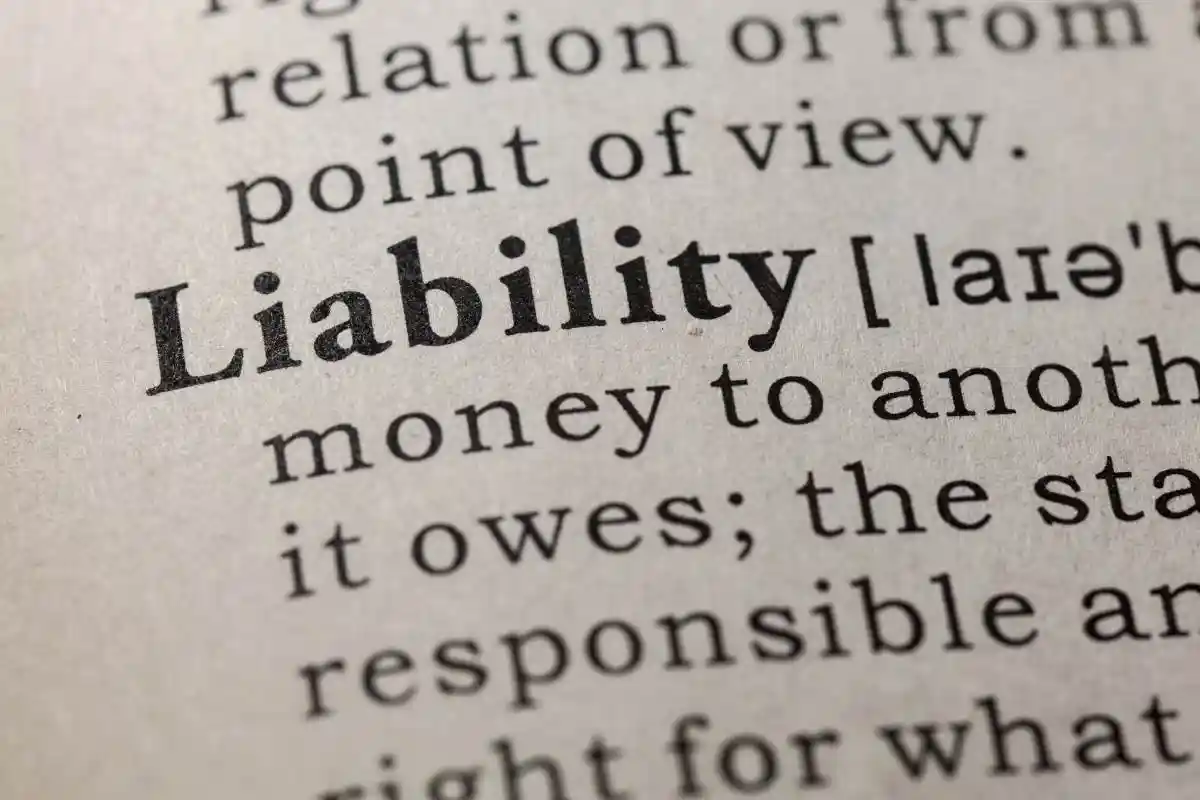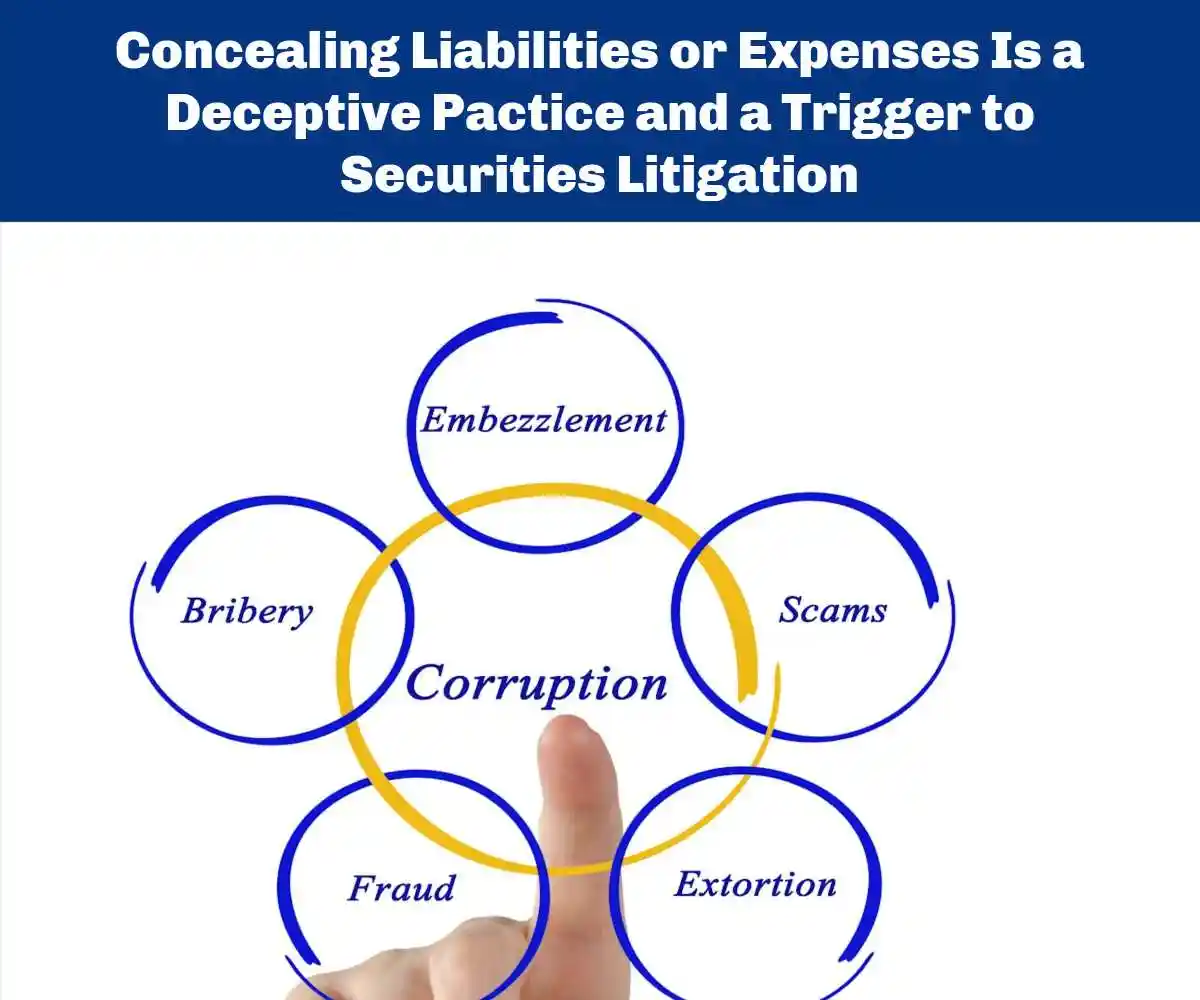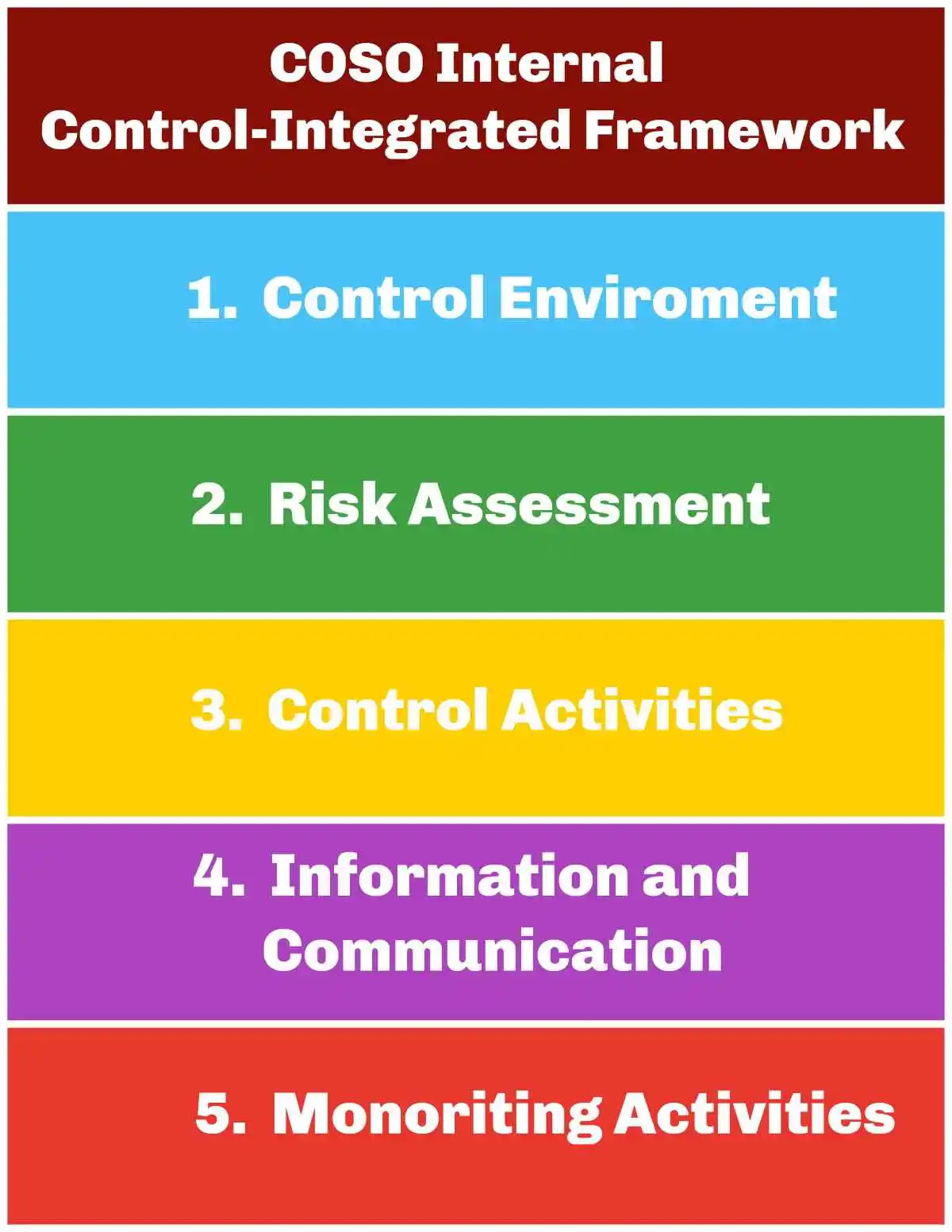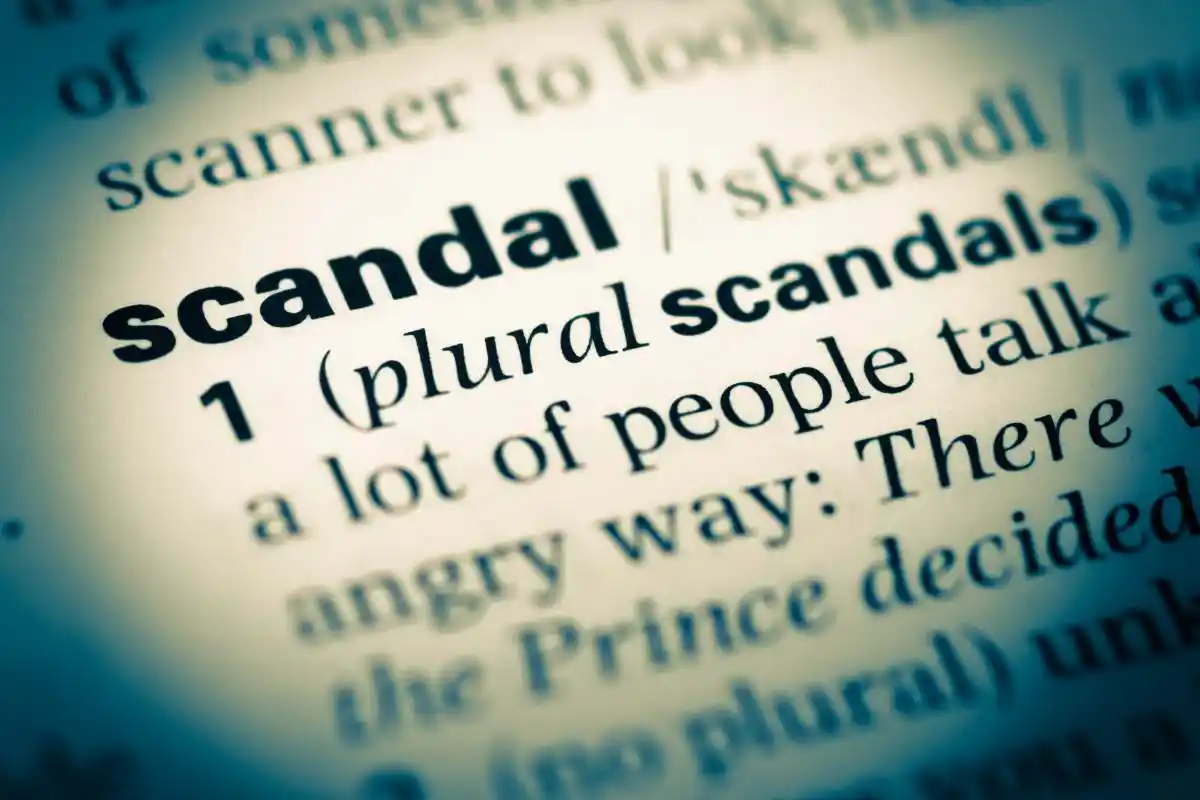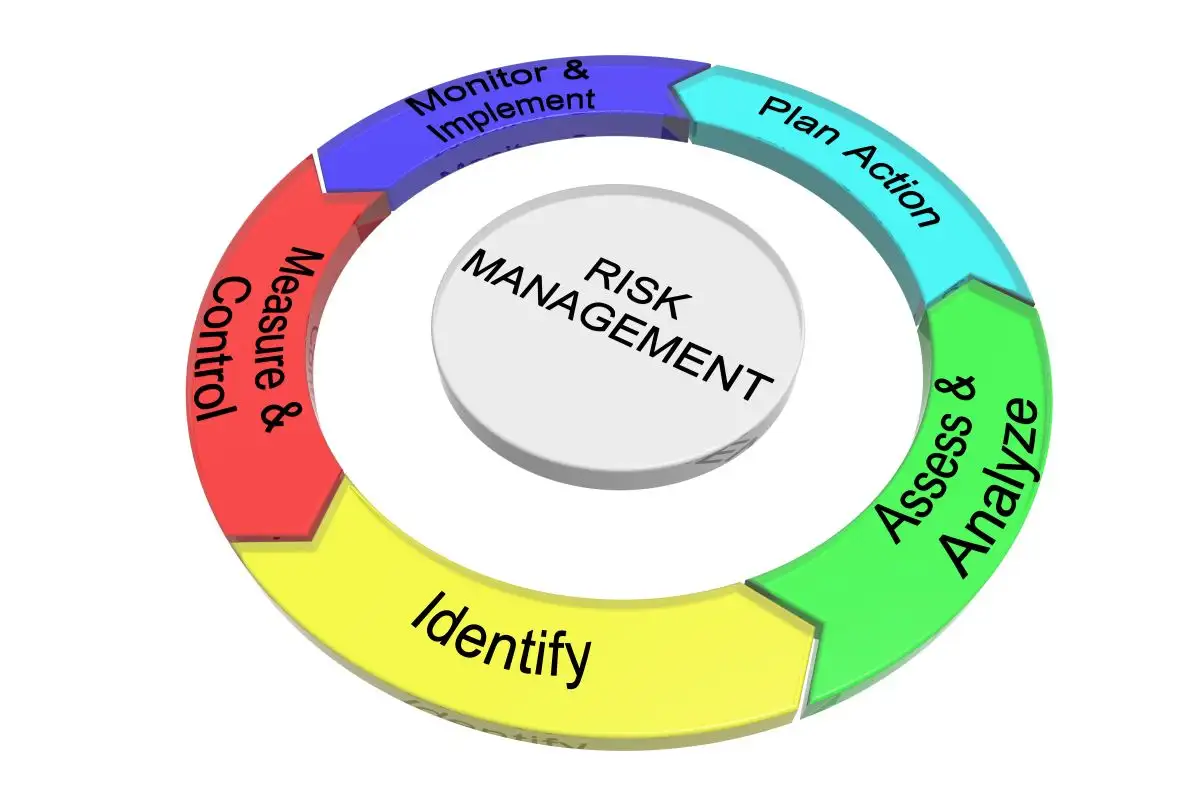Introduction to Concealing Liabilities in Financial Reporting
- Concealing Liabilities in Financial Reporting represents one of the most devastating forms of accounting fraud that continues to plague modern financial markets, serving as a direct catalyst for securities class action lawsuits and regulatory enforcement actions. More than 60% of Chief Financial Officers report that hidden or underestimated costs create significant barriers to accurate financial forecasting, according to recent Deloitte survey data.
- Financial pressure drives organizations to engage in systematic deception through liability concealment. The Association of Certified Fraud Examiners estimates that organizations lose approximately 5% of their annual revenues to fraud, with financial statement fraud accounting for a substantial portion of these losses. The median loss reaches $954,000 per case, demanding immediate attention from investors, auditors, and corporate governance professionals.
- Corporate scandals like Enron demonstrate the catastrophic consequences of concealed liabilities. America’s seventh-largest company engaged in sophisticated accounting fraud schemes that ultimately led to bankruptcy, wiping out $74 billion in shareholder value while destroying employee pensions and jobs. These cases underscore how liability concealment creates false narratives of corporate health that artificially inflate stock prices and attract unwarranted investor confidence.
- Systematic deception through underreported liabilities enables companies to appear stronger for loan covenant compliance and banking relationships. Some organizations deliberately underreport payables by holding checks for extended periods, creating artificial impressions that supplier invoices are being paid while preserving cash positions. The sophistication of these manipulation techniques makes detection particularly challenging for investors and auditors.
- Securities litigation inevitably follows when these deceptive practices unravel. Understanding the methods, motivations, and legal consequences of liability concealment provides essential protection for investors seeking to safeguard their portfolios and financial professionals committed to ethical reporting standards. The knowledge contained in this guide enables stakeholders to identify warning signs before corrective disclosures trigger dramatic stock price declines and resulting securities class actions.
Understanding Concealed Liabilities in Financial Reporting
- Hidden financial obligations create dangerous distortions in company valuations that can devastate investor portfolios. Concealing Liabilities in Financial Reporting involves the deliberate obscuring of financial obligations to present misleading pictures of corporate financial conditions.
- These deceptive practices create substantial gaps between reported financial positions and actual obligations, fundamentally undermining stakeholder decision-making processes.
What Constitutes a Concealed Liability?
- Concealed liabilities emerge when companies hide, underreport, or misclassify financial obligations to create artificial impressions of financial health. The simplest method involves failing to record them in accounting systems entirely. This deliberate omission distorts financial portraits where equity, assets, and net earnings appear artificially inflated.
- Financial obligations commonly subject to concealment include:
- Unrecorded loans and financing arrangements
- Warranties attached to sales
- Underreported employee benefits and wages
- Accrued taxes and interest expenses
- Pending lawsuits and legal obligations
- Environmental cleanup responsibilities
- Off-balance sheet items represent particularly sophisticated concealment vehicles. These arrangements remain unlisted on primary balance sheets while constituting significant financial obligations. Although sometimes representing legitimate financial strategies, these structures can obscure critical liabilities, especially when detailed only in accompanying footnotes that investors frequently overlook.
Distinguishing Omission from Misclassification
- Liability concealment typically employs either omission or misrepresentation strategies, each presenting distinct challenges for detection and legal enforcement.
- Omission encompasses the complete failure to include necessary information in financial disclosures. This practice involves excluding critical financial obligations that would materially impact stakeholder understanding. Companies might entirely omit pending litigation that could dramatically affect financial standing, leading investors to make decisions based on incomplete information.
- Misrepresentation involves providing deliberately false or misleading information. This approach includes recording incorrect details, essentially presenting active falsehoods rather than merely withholding information. Companies might record liabilities at significantly reduced values compared to actual obligations.
- Misclassification represents another common technique where companies manipulate liability categories to temporarily obscure actual financial obligations. This might involve improperly classifying debt as operating expenses or utilizing off-balance sheet financing to conceal true debt levels.
- The legal implications vary significantly between these approaches. Certain jurisdictions allow insurers to void policies for misrepresentation, while omission cases require proving fraudulent intent rather than mere oversight.
Connection to Financial Statement Fraud
- Concealing liabilities constitutes a fundamental component of financial statement fraud schemes. This practice violates core accounting principles by deliberately overstating assets or understating liabilities to misrepresent companies’ true liquidity positions.
- These deceptive practices fundamentally distort crucial financial metrics that investors and creditors rely upon for decision-making. Hidden liabilities make debt-to-equity ratios appear artificially favorable, creating false impressions of reduced investment risk. Similarly, manipulated expenses artificially inflate profitability ratios, generating misleading operational efficiency indicators.
- Discovery of concealed liabilities typically necessitates financial restatements following fraud exposure. These revelations undermine company credibility, diminish investor trust, and frequently trigger legal repercussions and regulatory sanctions.
- The Enron case provides the quintessential example of concealed liability consequences. Enron utilized special purpose entities to keep debt off balance sheets, presenting artificially healthy financial pictures to investors and analysts. Through complex financial maneuvers, the company transferred assets and liabilities to these entities, artificially inflating reported earnings while hiding true financial conditions.
Common Types of Concealed Liabilities and Expenses
Identifying specific categories of concealed financial obligations enables investors and auditors to detect potential manipulation before securities class action lawsuits become inevitable. Financial professionals must understand these common concealment techniques to strengthen their analytical approach and protect against accounting fraud.
Unrecorded Loans and Financing Arrangements
- Off-balance-sheet financing structures represent one of the most sophisticated methods companies use to hide debt obligations from investors and creditors. These arrangements create hidden exposure through multiple mechanisms:
- Participations in loans where servicing responsibilities are retained along with participating interest, creating undisclosed credit risk exposure
- Revolving accounts receivable financing through commercial paper conduits, where transfers may be improperly reported as sales
- Special Purpose Entities (SPEs) utilized to hold debt that should rightfully appear on the company’s primary financial statements
- ASC 860-20-50-5 requires entities to present separately the gains or losses on sales of loans or trade receivables, either in the income statement or footnotes. Companies deliberately structure these transactions to circumvent disclosure requirements, creating vulnerabilities that often lead to regulatory enforcement actions when discovered.
Underreported Employee Benefits and Wages
- Employee-related expense concealment carries significant legal and financial risks that can trigger costly litigation. Organizations engage in these deceptive practices through several mechanisms:
- Unreported waiting period liabilities create substantial hidden exposure when employees are offered benefits but applications remain unprocessed. Employers face potential legal consequences if benefits are later denied due to health conditions.
- Improper benefit opt-outs allow employees to waive mandatory coverage like Life, AD&D, or Disability benefits. These practices create hidden liabilities potentially costing companies “tens or hundreds of thousands of dollars” when claims arise.
- Unreported pay increases affecting insurance amounts create liability where employers must compensate for any shortfall during claims processing.
- Deliberate payroll underreporting often aims to obtain lower workers’ compensation premiums, though some cases stem from administrative errors. Authorities consider material and intentional payroll underreporting “a serious crime that may result in civil or criminal penalties”.
Pending Legal Obligations and Warranties
- Contingent obligations represent particularly dangerous categories of concealed liabilities because their eventual disclosure often triggers dramatic corrective disclosures and resulting securities litigation.
- Warranty obligations remain unrecorded until claims are actually made, creating unexpected future expense recognition that can devastate quarterly results.
- Legal claims from lawsuits frequently go unreported until settlements are reached, despite representing significant potential financial burdens that materially affect company valuation.
- Environmental liabilities for cleanup costs remain off books until damage becomes evident, creating substantial hidden obligations.
- Companies rationalize non-disclosure by claiming these liabilities are “too unpredictable or remote to warrant disclosure,” despite their potential material impact. External auditors should investigate thoroughly what remains hidden, as management often conceals these obligations behind subjective standards of “reasonably estimable” and “more than likely”.
Deferred Tax Liabilities and Accrued Interest
- Tax-related concealment involves manipulating timing differences between accounting rules and tax regulations. Companies exploit these differences through various schemes:
- Depreciation timing differences between straight-line accounting methods and accelerated tax methods create temporary differences that companies may exploit to understate future obligations.
- Installment sales treatment allows companies to recognize full income in financial statements while deferring tax recognition, creating deferred tax liabilities that may be deliberately understated.
- Proper accounting requires deferred tax liabilities appear on balance sheets as the “anticipated tax rate times the difference between taxable income and accounting earnings before taxes”. Without transparent reporting, financial statements fail to reflect complete measures of net earnings and future tax consequences.
- Risk mitigation requires understanding how manipulation of these categories creates distorted financial metrics. When the truth emerges through audits or whistleblower reports, the resulting restatements typically trigger securities class actions and regulatory scrutiny that can devastate shareholder value.
Techniques Used to Conceal Liabilities
- Companies employ increasingly sophisticated techniques to hide liabilities from investors and auditors. These methods range from complex financial engineering to deliberate manipulation of routine accounting procedures that create substantial risk mitigation challenges for stakeholders.
Off-Balance-Sheet Financing Structures
- Off-balance-sheet financing enables companies to structure transactions that keep significant liabilities outside their primary financial statements. This practice gained notoriety following the Enron scandal, where Special Purpose Entities (SPEs) concealed billions in debt while artificially inflating reported earnings.
- Complex financing arrangements typically manifest through several mechanisms:
- Trust mechanisms that borrow funds and make head-lease payments to operating companies without transferring asset title, thereby avoiding immediate taxes
- Synthetic leases that eliminate residual-value risk while maintaining high loan-to-value ratios
- Sale-leaseback arrangements where companies sell assets then lease them back, recording only rental expenses instead of debt
- The Financial Accounting Standards Board addressed these practices in 2016 after discovering public companies carried over $1 trillion in OBS financing for leasing obligations. Regulatory compliance failures often stem from inadequate disclosure of these arrangements to investors and creditors.
Delayed Expense Recognition Across Periods
- Expense manipulation through period deferral temporarily improves reported profits while creating future financial obligations. Organizations accomplish this deception through systematic accounting techniques that violate fundamental matching principles.
- Companies establish deferral templates for resources, items, or general ledger accounts that distribute expenses across accounting periods based on posting dates. Calculation methods include straight-line distribution, equal per period allocation, days-per-period calculations, or user-defined schedules. These techniques create artificial earnings patterns that mislead investors about operational performance.
Misclassification of Capital Versus Operating Expenses
- Misclassifying expenses creates significant distortions in financial reporting that affect key performance metrics. Proper separation of capital and operating budgets supports accurate accounting and appropriate tax planning aligned with regulatory requirements.
- Accounting irregularities emerge when capital and operating budgets become combined. Companies risk recording capital expenditures as operating expenses, which artificially distorts profit margins. Organizations may also underestimate short-term obligations by overcommitting cash to long-term investments.
- The distinction substantially affects financial ratios. Operating expenses immediately impact profit and loss statements, whereas capital expenses must be capitalized and amortized over extended periods. Misclassification schemes make financial statements appear healthier or riskier than actual conditions warrant.
Invoice Suppression and Documentation Withholding
- Invoice suppression represents a direct method of concealing liabilities through deliberate exclusion of invoices from accounting systems. This practice enables manipulation of financial results during critical reporting periods.
- Organizations implement invoice suppression features to exclude invoices with zero amounts or small values during processing runs. Billing executives may configure systems to suppress invoices for accounts below specified thresholds. These practices create gaps in internal controls that facilitate broader fraudulent schemes.
Improper Asset Valuation to Offset Liabilities
- Asset valuation manipulation frequently accompanies liability concealment schemes. Several warning signs indicate improper valuation practices designed to offset hidden obligations:
- Recurring negative cash flows alongside reported earnings growth
- Significant customer demand declines within the industry
- Assets or liabilities based on subjective judgments difficult to support
- Non-financial management excessively participating in accounting principles selection
- Red flags include unusual gross margin increases exceeding industry peers, growth in days’ sales receivables ratios, and reductions in allowances for bad debts. These indicators often signal problematic asset valuations designed to mask concealed liabilities that could trigger securities litigation when discovered.
 Sophisticated Methods of Liability Concealment
Sophisticated Methods of Liability Concealment
- Accounting fraud through liability concealment employs increasingly sophisticated techniques designed to escape detection by investors, auditors, and regulators.
- Companies under financial pressure to meet earnings expectations or comply with debt covenants often resort to complex schemes that systematically hide financial obligations from stakeholders.
Off-Balance-Sheet Financing: The Enron Legacy
- Off-balance-sheet financing represents the most notorious method of concealing liabilities, immortalized by the Enron scandal where Special Purpose Entities (SPEs) hid billions in debt while artificially inflating reported earnings . These arrangements enable companies to structure transactions that keep significant liabilities outside their primary financial statements, creating misleading impressions of financial health.
- Trust mechanisms allow companies to borrow funds and make payments without transferring asset titles, thereby avoiding immediate tax consequences and disclosure requirements . Synthetic leases eliminate residual-value risk while maintaining high loan-to-value ratios that would otherwise trigger covenant violations . Sale-leaseback arrangements enable organizations to sell assets then lease them back, recording only rental expenses instead of the underlying debt obligations.
- The FASB addressed these practices in 2016 after discovering public companies carried over $1 trillion in off-balance-sheet financing for leasing obligations alone . This manipulation directly violates regulatory compliance requirements and creates substantial exposure to securities class action lawsuits when the true financial position is eventually revealed.
Expense Manipulation Across Reporting Periods
- Delayed expense recognition enables companies to push costs into future accounting periods, creating temporary improvements in reported profits that mislead investors about operational performance. Organizations accomplish this deception through sophisticated deferral templates that distribute expenses across multiple reporting periods using straight-line distribution, equal allocation methods, or manipulated user-defined schedules.
- These techniques create artificial earnings growth that cannot be sustained, ultimately leading to corrective disclosures when the manipulation is discovered. The resulting stock price declines often trigger securities litigation as investors seek to recover losses from reliance on false financial statements.
Capital Versus Operating Expense Misclassification
- Misclassifying expenses creates significant distortions that affect crucial financial ratios and investor decision-making. Companies may record capital expenditures as operating expenses to distort profit margins, or conversely, capitalize operating costs to artificially inflate current-period earnings.
- Operating expenses immediately impact profit and loss statements, while capital expenses must be capitalized and amortized over extended periods . This distinction substantially affects financial ratios that investors rely upon for valuation purposes . When misclassification is discovered, companies face not only regulatory enforcement actions but also extensive securities class actions from investors who suffered losses due to the misleading financial statements.
Invoice Suppression and Documentation Manipulation
- Invoice suppression provides a direct method for concealing liabilities by deliberately excluding certain invoices from accounting systems during critical reporting periods. Companies may configure systems to suppress invoices below specified thresholds or instruct employees to withhold documentation from auditors.
- This manipulation becomes particularly problematic during quarter-end reporting when companies face pressure to meet analyst expectations. The temporary concealment of liabilities creates false impressions of improved cash flow and reduced obligations, ultimately contributing to accounting fraud schemes that trigger securities litigation when discovered.
Asset Valuation Manipulation to Offset Hidden Liabilities
- Asset valuation manipulation often accompanies liability concealment as companies attempt to maintain artificial balance sheet strength. Several red flags indicate these problematic schemes:
- Recurring negative cash flows alongside reported earnings growth suggest companies cannot convert claimed profits into actual cash . Significant customer demand declines within industries may be masked through aggressive asset valuations . Assets based on subjective judgments that prove difficult to support often signal manipulation designed to offset concealed liabilities.
- These warning signs frequently precede major financial restatements and resulting securities class action lawsuits as the true extent of concealed liabilities becomes apparent to investors and regulators.
Red Flags and Early Warning Signs for Investors
- Warning signs serve as critical early detection mechanisms that enable vigilant investors to protect themselves before accounting fraud escalates into devastating financial losses.
- Recognizing these telltale patterns provides essential protection against Concealing Liabilities in Financial Reporting schemes that can trigger massive securities class action lawsuits.
Revenue Growth Without Matching Cash Flow
- Persistent gaps between reported earnings and actual cash flow generation represent the most significant red flag for liability concealment. This disconnect often indicates financial statement fraud through systematic expense manipulation.
- Critical indicators include:
- Revenue increasing significantly while cash flow remains stagnant or decreases
- Cash flow from operations to net income ratio consistently below one
- Fourth-quarter earnings appearing unusually high without seasonal justification
- Cash flow manipulation proves nearly impossible to sustain long-term because companies cannot fabricate actual cash transactions while maintaining artificial revenue figures on financial statements. Companies concealing liabilities typically struggle to convert reported profits into genuine cash generation, creating vulnerabilities that eventually lead to corrective disclosures and securities class action filings.
Unexplained Accounting Policy Changes
- Unexplained shifts in accounting methods frequently signal management attempts to conceal liabilities or manipulate financial results. Companies facing financial pressure often change accounting policies to temporarily improve their reported financial position.
- Warning patterns include:
- Sudden adoption of accounting policies diverging from industry standards
- Retroactive application of new policies significantly impacting historical results
- Inadequate disclosure regarding the financial impact of policy changes
- Legitimate accounting changes typically include transparent explanations and clear business justifications. Investors should exercise heightened scrutiny for potential securities litigation risks when companies make unexplained policy shifts, particularly near reporting deadlines.
Accounts Payable Discrepancies
- Concealed obligations often reveal themselves through inconsistencies in accounts payable that companies attempt to hide from investors and creditors. These discrepancies indicate systematic efforts to manipulate financial statements.
- Red flags encompass:
- Unexpected reductions in accounts payable during industry credit crunches
- Gross margins exceeding industry peers without operational advantages
- Unusual reductions in days’ purchases outstanding
- Earnings growth coupled with recurring negative operating cash flows
- Management teams sometimes underreport payables by holding checks for extended periods or instructing employees to hide invoices from auditors. These practices create artificial improvements in financial ratios while concealing true financial obligations.
Documentation Irregularities and Missing Records
- Documentation manipulation represents a strong indicator of systematic efforts to conceal liabilities from investors and auditors. Companies engaging in accounting fraud often manipulate or withhold documentation to prevent detection.
- Problematic patterns include:
- Invoices missing from accounting sub-ledgers
- Unexplained discrepancies in account reconciliations
- Documents showing signs of manipulation or unauthorized alterations
- Significant transactions lacking proper documentation
- Fraud perpetrators frequently withhold evidence or provide false information when questioned, sometimes creating fabricated documentation to conceal their activities. These practices often precede securities class action lawsuits when the truth eventually emerges.
High Finance and Audit Staff Turnover
Management turnover in financial positions often signals underlying problems that insiders recognize before they become public knowledge. Finance professionals with knowledge of questionable practices frequently depart to avoid association with potential fraud.
Concerning patterns include:
- Departures of employees positioned to identify financial problems early
- Staff leaving before stock options lose value due to anticipated problems
- Turnover of key executives creating organizational instability
- Frequent changes in management or accounting personnel
These departures often occur when employees face pressure to participate in unethical activities or when they identify financial distress signals not yet disclosed to investors. Unusual turnover in financial roles should prompt investors to investigate whether these changes might indicate deeper problems that could eventually trigger regulatory enforcement actions.
Real-World Cases of Liability Concealment and Securities Litigation
Corporate scandals involving liability concealment demonstrate how theoretical fraud techniques devastate actual companies and their investors. These cases reveal the sophisticated methods companies employ to hide financial obligations and the inevitable securities litigation that follows discovery.
Enron: Off-Balance-Sheet Debt and Special Purpose Entities
- The Enron scandal remains the quintessential example of how omissions in financial statements can devastate markets and investors.
- The energy company employed sophisticated accounting fraud schemes, including the use of special purpose entities (SPEs) to hide over $1 billion in debt from its balance sheets.
- These corporate scandals involved deliberate omissions of critical financial information that painted a false picture of the company’s financial health.
- Key Legal Precedents Established:
- Enhanced auditor independence requirements under the Sarbanes-Oxley Act
- Stricter CEO and CFO certification of financial statements
- Whistleblower protection provisions that encouraged internal reporting of fraud
- The securities litigation that followed resulted in one of the largest bankruptcy proceedings in U.S. history, with investors losing approximately $74 billion in market value.
- The case established crucial precedents for regulatory compliance, particularly regarding the disclosure of off-balance-sheet transactions and the independence of external auditors.
Colonial Bank: Phantom Securities and Account Manipulation
- Colonial Bank’s collapse resulted from a $2.9 billion fraud scheme executed alongside mortgage lender Taylor, Bean & Whitaker (TBW). The scheme began modestly in 2002 when TBW experienced overdrafts in its master account.
- Escalating fraud techniques evolved to include sweeping money overnight between accounts to hide overdrafts, selling Colonial Bank mortgage loans that did not exist, and creating fictitious “Plan B” loans already committed to other investors. Colonial Bank paid TBW more than $400 million for assets with no value. The scheme expanded to misappropriate approximately $1.5 billion from Ocala Funding, a mortgage lending facility controlled by TBW.
Roadrunner: Deferred Expenses and Asset Write-Down Manipulation
- Roadrunner Transportation Systems engaged in systematic financial statement fraud from 2013 through 2017 to meet earnings guidance and analyst projections. The shipping company’s deceptive practices demonstrated how liability concealment serves the broader goal of meeting Wall Street expectations.
- Fraudulent accounting practices included improperly deferring expenses across multiple quarters, avoiding write-downs of worthless assets, manipulating earnout liabilities to create income “cushions,” and hiding customer losses from independent auditors. The Roadrunner overstating its net income by more than $66 million from 2011 to Q3 2016. Corrective disclosures ultimately forced the company to take non-cash impairment charges of $373.7 million.
Waste Management: Misclassified Environmental and Operational Costs
- Waste Management executives employed multiple liability concealment techniques that became textbook examples of accounting irregularities. The company’s fraudulent methods involved extending estimated useful lives of garbage trucks while increasing salvage values, capitalizing landfill maintenance costs instead of expensing them, and inflating environmental reserves during profitable quarters for use during weaker periods.
- Securities class action lawsuits followed when the systematic fraud was exposed. The scheme led to $1.7 billion in overstated earnings, causing shareholders to lose over $6 billion when the stock price dropped from $35 to $22 per share. This case illustrates how seemingly routine accounting decisions can mask extensive liability concealment schemes that ultimately trigger regulatory enforcement actions and investor litigation.
Legal and Regulatory Consequences of Concealment
Regulatory enforcement actions and securities class action lawsuits represent the inevitable aftermath when liability concealment schemes collapse. These legal consequences extend far beyond reputational damage, creating devastating financial penalties and potential criminal prosecution for executives involved in financial statement fraud.
Securities Class Action Lawsuits: The Legal Response
- Securities litigation follows a predictable pattern when concealed liabilities trigger corrective disclosures and massive stock price declines. The resulting investor losses create powerful foundations for securities class actions that can devastate companies financially.
- Securities class action lawsuits typically emerge when:
- Stock prices plummet following disclosure of previously hidden obligations
- Investor losses create grounds for federal securities law violations claims
- Shareholder damages far exceed any temporary benefits gained from fraudulent practices
- Prominent securities litigation firms have recovered tens of billions for defrauded investors. One record-breaking settlement reached USD 1.57 billion after 14 years of litigation including a six-week jury trial. These massive recoveries demonstrate why the temporary benefits of concealment pale compared to ultimate legal consequences.
Regulatory Enforcement: SEC and DOJ Response
- The Securities and Exchange Commission (SEC) and Department of Justice (DOJ) maintain specialized enforcement units focused on detecting and prosecuting accounting fraud. Regulatory compliance failures involving concealed liabilities trigger increasingly severe penalties as enforcement agencies employ sophisticated analytical tools to identify manipulation patterns.
- Recent cases demonstrate the mounting financial consequences. Prominent companies face penalties exceeding USD 124 million to resolve anti-bribery and recordkeeping charges related to concealed obligations. These enforcement actions serve as powerful deterrents while supporting subsequent private securities litigation.
- Regulatory enforcement creates cascading effects that often trigger additional legal problems. SEC investigations provide evidence and legal precedents that strengthen subsequent securities class action cases, multiplying the total legal exposure for companies engaging in liability concealment.
Criminal Liability: Personal Consequences for Executives
- Corporate executives face personal accountability that extends well beyond corporate penalties. Section 807 of the Sarbanes-Oxley Act imposes severe criminal penalties on individuals knowingly committing securities fraud, including fines and up to 25 years imprisonment.
- Criminal liability for executives includes:
- Up to USD 1 million fine and 10 years imprisonment for knowing violations of securities laws
- Up to USD 5 million fine and 20 years imprisonment for willful violations involving materially inaccurate financial statements
- The corporate veil provides limited protection when executives intentionally participate in fraudulent concealment schemes. CEOs face personal liability when they deliberately steer companies away from regulatory compliance or actively participate in accounting fraud.
Financial Restatements and Market Devastation
- Financial restatements following concealed liability discoveries typically trigger dramatic market consequences that extend far beyond immediate stock price declines. The revelation of hidden obligations forces companies to restate prior financial results, undermining investor confidence and creating massive shareholder losses.
- Restatement consequences include:
- Immediate and often catastrophic market value declines
- Loss of institutional investor confidence and analyst coverage
- Significant employment consequences and management turnover
- The governance implications prove equally severe. Studies reveal that more than half of outside directors leave corporate boards within three years following significant income-decreasing restatements. These departures signal the long-term reputational damage that accompanies liability concealment schemes even after legal settlements are reached.
Prevention Strategies: Internal Controls and Governance
- Robust prevention systems represent the most effective defense against accounting fraud and liability concealment. Internal controls create systematic barriers that make financial statement fraud significantly more difficult for potential perpetrators to execute and conceal.
Segregation of Duties and Access Controls
- Segregation of duties stands as the cornerstone of internal control frameworks. This principle prevents any single individual from controlling all aspects of a transaction cycle, directly supporting regulatory compliance objectives. The COSO framework separates four key responsibilities:
- Authorization of transactions
- Custody of assets
- Recording/reconciliation of transactions
- Review functions
- Organizations must periodically evaluate which controls prove most critical, creating a segregation of duties matrix that maps responsibilities by department and individual. When full segregation proves impractical due to staffing limitations, compensating controls become essential. These include management reviews, independent reconciliations, and dual authorizations for high-value transactions.
Role of ERP Systems in Fraud Prevention
- Enterprise Resource Planning systems provide critical monitoring capabilities that help prevent liability concealment. Proper ERP implementation offers substantial benefits for risk mitigation:
- Standardizing business processes to establish baseline metrics for detecting anomalies
- Supporting audit trails for all financial transactions
- Enabling sophisticated segregation of duties controls
- Regular security audits remain essential—studies indicate approximately 8% of users possess access rights that would enable them to commit fraud. Organizations should implement transaction-level security that bridges identity governance and application controls.
Whistleblower Protections and Anonymous Reporting
- Federal legislation provides substantial safeguards for employees who report financial misconduct. Under the Dodd-Frank Wall Street Reform and Consumer Protection Act, the SEC can take legal action against employers who retaliate against whistleblowers. The SEC’s Office of the Whistleblower program offers additional incentives:
- Whistleblowers can receive 10-30% of recoveries exceeding $1 million
- Tips can be submitted anonymously through an attorney
- Strict confidentiality protections are maintained
- Organizations should implement anonymous reporting mechanisms allowing employees to report suspicious activities without fear of retaliation.
Audit Committee Oversight and Board Accountability
- Audit committees play a pivotal role in preventing liability concealment through comprehensive oversight responsibilities:
- Monitoring internal control effectiveness
- Overseeing financial reporting integrity
- Assessing fraud risk in financial statements
- Corporate governance requires that audit committees receive regular updates on cyber risks, process evaluations, and control deficiencies. Their responsibilities include confirming that management maintains adequate control systems while promoting behaviors that enable reliable reporting.
Regulatory Compliance Training for Staff
- Employee training represents a critical defense against financial statement fraud. Effective regulatory compliance training extends beyond mere “checking boxes”:
- Building a risk-based culture throughout the organization
- Covering key regulations relevant to specific business operations
- Educating employees on their active role in fraud prevention
- Training should address industry standards, anti-bribery policies, ethics, and fraud detection techniques. The Department of Justice’s Evaluation of Corporate Compliance Programs emphasizes that training must prove relevant to business operations rather than adopting generic approaches.
Conclusion
- Concealing Liabilities in Financial Reporting continues to represent one of the most insidious forms of accounting fraud that devastates investor confidence and triggers costly securities class action lawsuits. The examination of notorious corporate scandals like Enron and Colonial Bank demonstrates how liability concealment schemes inevitably collapse, creating catastrophic consequences for companies, executives, and shareholders.
- Financial statement manipulation through hidden liabilities poses persistent threats to market integrity. Off-balance-sheet arrangements, delayed expense recognition, and misclassified transactions serve as primary vehicles for deception that artificially inflate critical financial metrics. These manipulations distort EBITDA calculations, debt-to-equity ratios, and net income figures that investors rely upon for decision-making.
- Red flags provide early warning systems for vigilant stakeholders seeking protection against these deceptive practices:
- Revenue growth without corresponding cash flow increases • Unexpected changes in accounting policies near reporting deadlines
- Unusual accounts payable trends that contradict industry conditions • Missing or altered financial documentation during audit processes • High turnover among financial staff with knowledge of reporting procedures
- Legal consequences extend far beyond reputational damage when liability concealment schemes unravel. SEC enforcement actions, criminal prosecutions, and securities litigation represent inevitable outcomes that can destroy corporate value and result in executive imprisonment under Sarbanes-Oxley Act provisions. The financial settlements often exceed hundreds of millions, far surpassing any temporary benefits gained from fraudulent practices.
- Prevention strategies offer the most effective defense against financial statement fraud. Strong internal controls built upon segregation of duties, robust ERP systems, whistleblower protections, and active audit committee oversight create systematic barriers that make liability concealment significantly more difficult for potential perpetrators.
- Corporate governance failures often precede major fraud revelations. Organizations with weak ethical frameworks become vulnerable to regulatory enforcement and securities class actions when employees face pressure to manipulate financial results. The investment in effective prevention measures represents not merely a compliance obligation but a fundamental business imperative that protects stakeholder interests.
- Understanding these sophisticated concealment schemes empowers investors to identify warning signs before corrective disclosures trigger dramatic stock price declines and resulting litigation. Risk mitigation through vigilant analysis of financial statements and recognition of behavioral patterns provides essential protection in today’s complex financial landscape.
Key Takeaways
Understanding how companies conceal liabilities is crucial for protecting investments and maintaining market integrity. These deceptive practices create artificial financial health impressions that can lead to devastating losses when exposed.
• Hidden liabilities distort critical financial metrics – Companies use off-balance-sheet financing, delayed expense recognition, and misclassification to artificially improve debt-to-equity ratios and inflate profitability measures.
• Revenue growth without matching cash flow signals fraud – The most significant warning sign is persistent gaps between reported earnings and actual cash generation, indicating potential expense manipulation.
• Legal consequences are severe and far-reaching – Discovery triggers SEC enforcement, criminal prosecutions with up to 25 years imprisonment for executives, and securities class action lawsuits costing billions in settlements.
• Strong internal controls prevent concealment schemes – Effective segregation of duties, robust ERP systems, whistleblower protections, and active audit committee oversight create systematic barriers against fraudulent reporting.
• Historical cases reveal predictable patterns – Enron, Colonial Bank, and Waste Management demonstrate how concealment techniques evolve from simple omissions to sophisticated off-balance-sheet structures before inevitable collapse.
The key to protection lies in recognizing early warning signs like unusual accounting policy changes, documentation irregularities, and high finance staff turnover. These red flags often precede major financial restatements and investor losses, making vigilant monitoring essential for all stakeholders.
FAQs
Q1. What motivates companies to conceal liabilities and expenses? Companies primarily conceal liabilities and expenses to artificially improve their financial results. By hiding debts or costs, they can make their balance sheets look stronger and report higher net income, making the company appear more financially stable and attractive to investors and creditors.
Q2. What are some common red flags in financial statements that may indicate concealed liabilities? Common red flags include revenue growth without corresponding cash flow increases, unexpected changes in accounting policies, unusual accounts payable trends, missing or altered financial documentation, and high turnover among financial staff.
Q3. How do concealed liabilities affect key financial metrics? Concealed liabilities can significantly distort important financial metrics. They can artificially improve debt-to-equity ratios, inflate profitability measures like EBITDA, and create a false impression of the company’s overall financial health and performance.
Q4. What are the potential legal consequences for companies that conceal liabilities? Legal consequences can be severe, including SEC enforcement actions, criminal prosecutions with potential imprisonment for executives, and securities class action lawsuits that can result in billions of dollars in settlements. Companies may also face substantial fines and reputational damage.
Q5. How can organizations prevent liability concealment? Organizations can prevent liability concealment by implementing strong internal controls such as effective segregation of duties, robust ERP systems, whistleblower protection programs, and active audit committee oversight. Regular staff training on regulatory compliance and ethics is also crucial.
Contact Timothy L. Miles Today for a Free Case Evaluation
If you suffered substantial losses and wish to serve as lead plaintiff in a securities class action, or have questions about securities class action settlements, or just general questions about your rights as a shareholder, please contact attorney Timothy L. Miles of the Law Offices of Timothy L. Miles, at no cost, by calling 855/846-6529 or via e-mail at [email protected].(24/7/365).
Timothy L. Miles, Esq.
Law Offices of Timothy L. Miles
Tapestry at Brentwood Town Center
300 Centerview Dr. #247
Mailbox #1091
Brentwood,TN 37027
Phone: (855) Tim-MLaw (855-846-6529)
Email: [email protected]
Website: www.classactionlawyertn.com
FacebookLinkedinPinterestyoutube
Visit Our Extensive Investor Hub: Learning for Informed Investors



